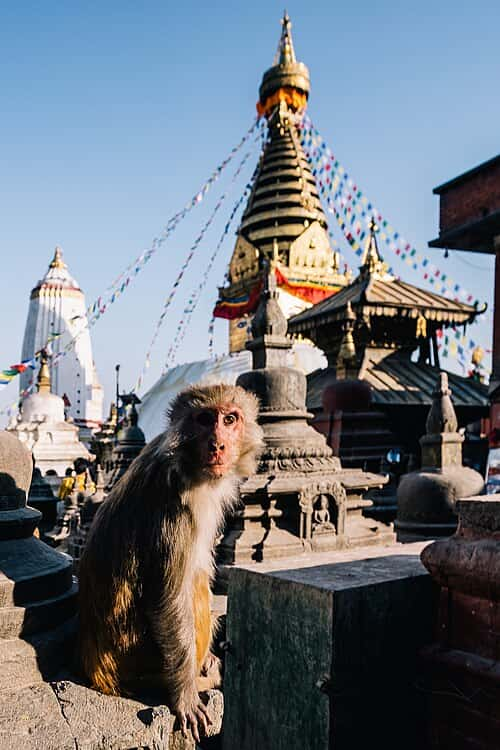(1)(1).jpg)
Swayambhunath Stupa
One of the oldest and most sacred monuments of Nepal is Swayambhunath Stupa, which stands on a hill in Kathmandu Valley. It is also referred to as the Monkey Temple and is a manifestation of spiritual and cultural richness and harmony, which is visited by pilgrims of both Buddhist and Hindu faiths. The impressive structure of the stupa is a huge white dome symbolising the earth, crowned by a golden spire of thirteen levels, each one of them symbolising the ways to enlightenment. The square, at the bottom of the spire, has the all-seeing Eyes of Buddha, facing four directions, as a reminder to the worshippers of the way of wisdom.
The name of the site, Swayambhunath, translates to self-arisen and links to an old myth. It is said that the Kathmandu Valley used to be a huge lake out of which a flowering lotus sprouted. It is believed that Bodhisattva Manjushri dried up the lake by slicing a channel through it with his sword and then the lotus became the hilltop where stupa can be seen today. This mythical birth has given the monument a strong religious connotation lasting more than a millennium. The Swayambhunath complex is a UNESCO World Heritage Site recognised since 1979, consisting of a combination of stupas, chaityas, shrines, and temples that show how the Hindu and Buddhist traditions have blended harmoniously in the Nepalese culture.
The eastern side of the compound is usually reached by a 365-step stone staircase past prayer wheels and guardian statues. Upon reaching the top they are received by sweeping panoramic views of Kathmandu and an atmosphere filled with the aroma of incense and the sound of spinning prayer wheels. Pilgrims, monks and tourists all perform a clock-wise circumambulation around the stupa, whispering prayers and making offerings of butter lamps. The spiritual atmosphere is complemented with the waving of colourful prayer flags and the appearance of sacred monkeys, which roam freely around the area and became an inseparable part of it.
Its nickname Monkey Temple came into use in the 1970s when it was home to the rhesus macaques. Visitors have made their antics legendary. One traveller remembers: “The first thing we encountered were lots of monkeys… they were everywhere; looking at you in a sly manner, walking with you as though they were your guide.” They are adorable but also steal food and shiny things so beware visitors!
Swayambhunath is not a monument but a living breathing centre of Nepalese identity. It reflects the spirit of Kathmandu-the place where myth and modernity go hand in hand and devotion is not only seen but felt. It is a great fit to Monument Moments because of its spectacular images, heavy symbolism, early history and colourful spiritual life.


